Mobile phones appeared in Europe with 1981 and, in just three decades, have almost completely displaced landlines. People – both in life and in technology – are looking for freedom and, in fact, independence from things over which they often have no control.
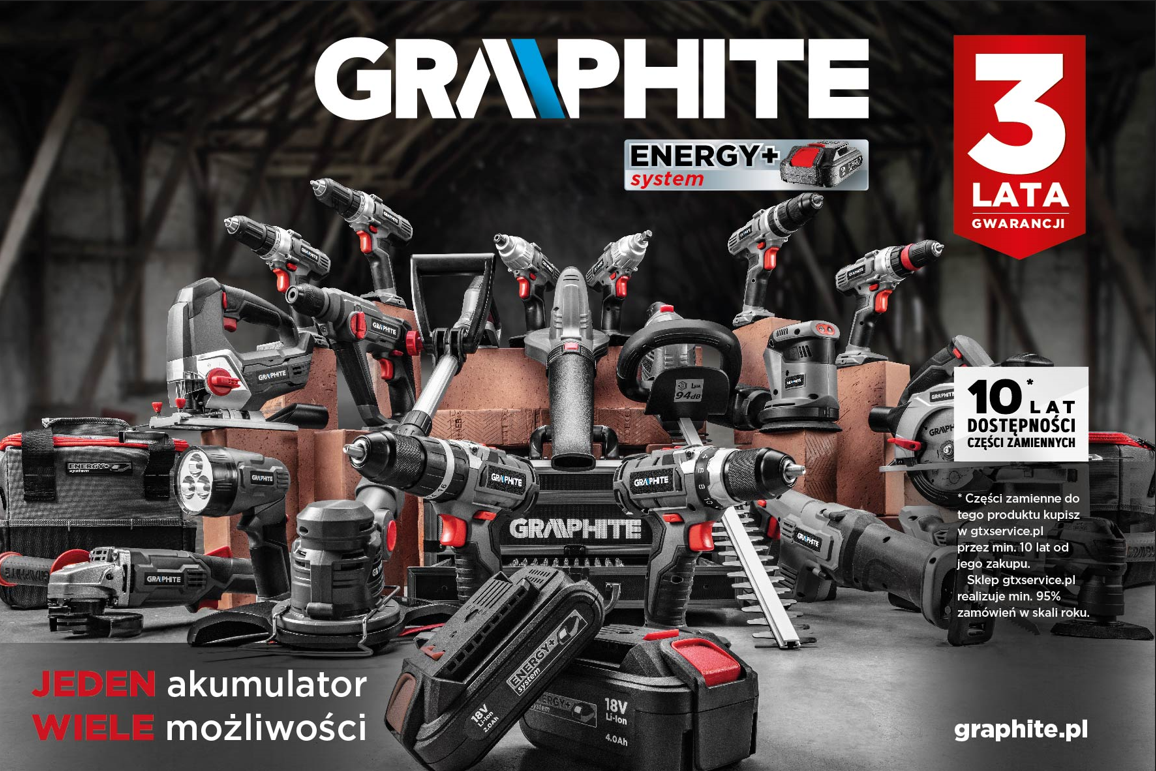
Telephones have freed you from the obligation to wait for an important call while staying in one place for a long time, and rechargeable systems make it easy to use your tools exactly where you want.
Energy+, power without limits
Many companies specialise in cordless solutions and supply their dedicated, tool-optimised battery systems. The GRAPHITE brand, with its Energy+ line, is a proven technology provider and has been offering an impressive range of chainsaws, blowers, mowers and drills, among others, for several years.
Battery systems include not only the power tools themselves, but an important part of it is the foundation, i.e. the batteries and chargers. It is worth taking a moment to choose the right capacity and number of accessories for you. Proper storage is also important. For this purpose, the practical bags or cases from the GRAPHITE brand range will prove useful.
Mains or battery powered?
Mains-powered tools are often associated with more robust and more powerful devices. But is that right? Nowadays, cordless power tools are no less powerful than their traditional counterparts.
Examples include:
- Energy+ 18 V, Li-Ion drill/driver with removable 10 mm chuck 58G022 GRAPHITE – which reaches 1,250 rpm, in addition to being practically adjustable and LED workplace lighting,
- The screwdriver comes complete with 2 Ah battery, charger, bag and bits 58G012-S15 GRAPHITE – which reaches speeds of up to 2,200 rpm and generates a user-safe peripheral impact torque to increase the force of the tool on the material.
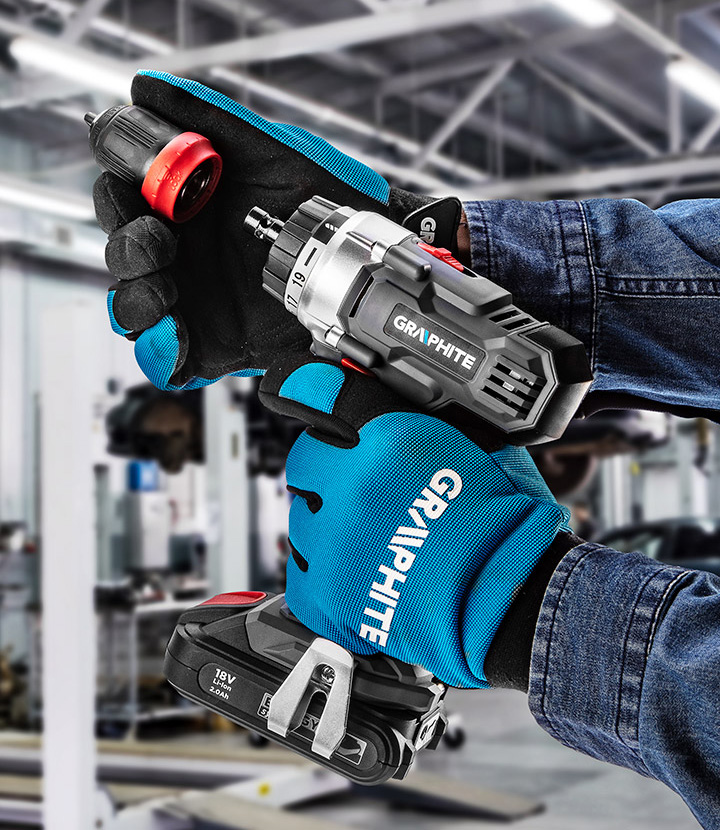
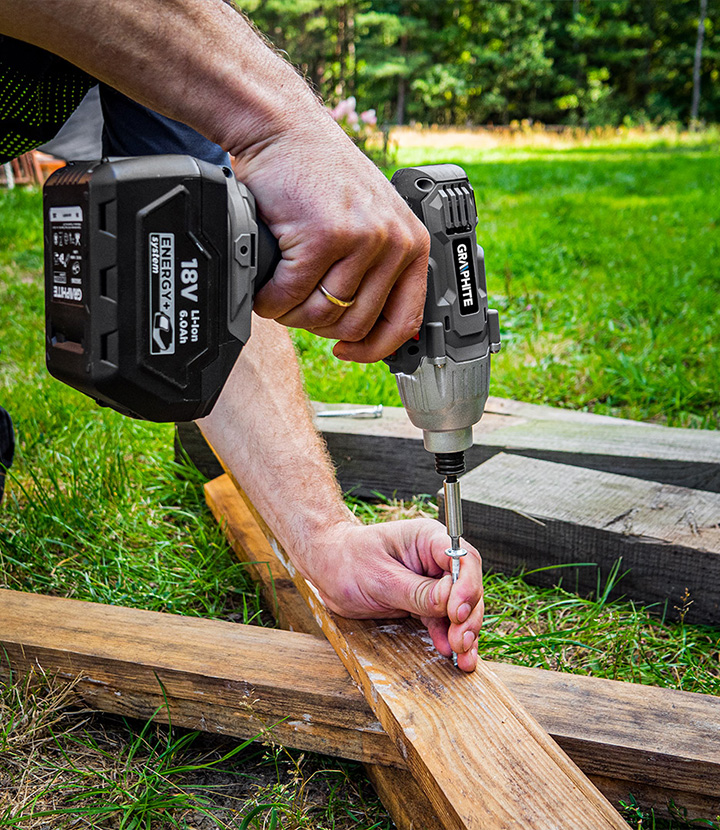
Above and beyond this, the use of rechargeable systems is associated with a number of features that affect both safety and convenience. The advantage of having tools from one manufacturer is the ability to connect one battery to multiple devices. However, this is a feature that you do not have to worry about with networked technology either.
What affects the comfort of batteries?
- Mobility – undoubtedly, packing tools in a bag or suitcase and taking them with you to a plot of land without a mains connection poses no problems in this case. The convenience of the rechargeable system is based on working in almost any conditions, without worrying about sudden power supply or the cumbersome organisation of generators.
- No restrictions – power cables always have a limited length. If you are working in several rooms and the need arises to change location quickly, you have to spend time and energy unplugging the cable and finding the contact in the new location. Cordless tools can be carried freely with you. They are immediately ready to work (and much easier to store).
- Safety – on construction or renovation sites, where there are often many people in a confined space, there is a risk of stepping on or even cutting the cable. This is an extremely dangerous scenario that must always be borne in mind when using classic tools. Battery-powered devices without a cable are much safer and accident-free in this respect.
Battery systems and the environment
All it takes is for the aforementioned cable to be cut in a power tool and virtually the entire tool becomes almost useless. Not only does the GRAPHITE brand offer a three-year warranty on the equipment and battery (for the private customer on receipt and the business customer on invoice), but with a highly developed service line – it also commits to having spare parts for 10 years after the tool is manufactured.
By using replacement components but keeping the remaining components of the appliance, you not only save money – such solutions contribute to consciously minimising electro-waste and leaving a lower carbon footprint.
Battery-powered systems also encourage lending and sharing of tools. All it takes is for one person to own a device from the same line with a rechargeable battery to benefit company or friends as required.
Lithium-ion (Li-Ion) batteries
This is a type of battery that is considered the best power source for tools for a reason. Its construction is based on one electrode made of porous carbon and another made of metal oxides. The electrolyte, in turn, is a solid or liquid rich in lithium salts, previously dissolved in a mixture of organic solvents.
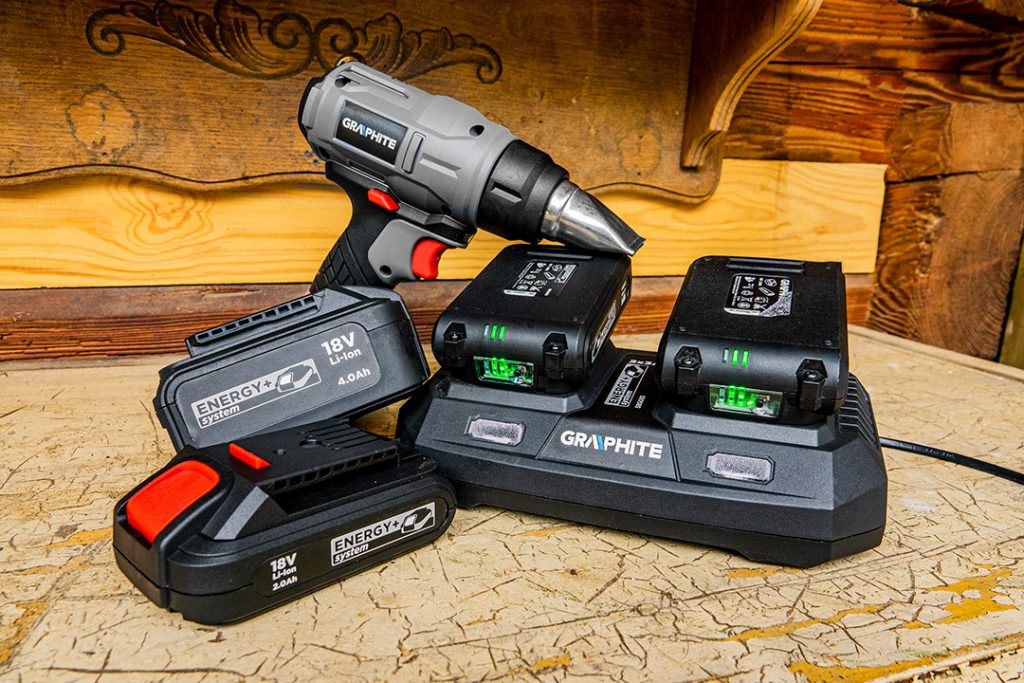
What speaks in favour of these batteries?
- They allow twice as much energy to be accumulated as NiMH batteries of the same size and weight.
- They do not need to be discharged to the end in order to be recharged again. There is no so-called memory effect that occurs with other types of batteries, where their service life would be drastically reduced.
- It maintains a charge level of more than 80%, even when not used for more than 90 days.
- Batteries of this type are smaller and up to 40% lighter than other types.
Energy+ offers lithium-ion batteries in three versatile variants:
- Energy+ 18 V, Li-Ion 2 Ah battery, 58G001,
- Energy+ 18 V, Li-Ion 4 Ah battery, 58G004,
- Energy+ 18 V, Li-Ion 6 Ah battery, 58G086.
In addition, they can be charged in a single or double charger. The latter model allows two batteries to be charged simultaneously, which saves time.
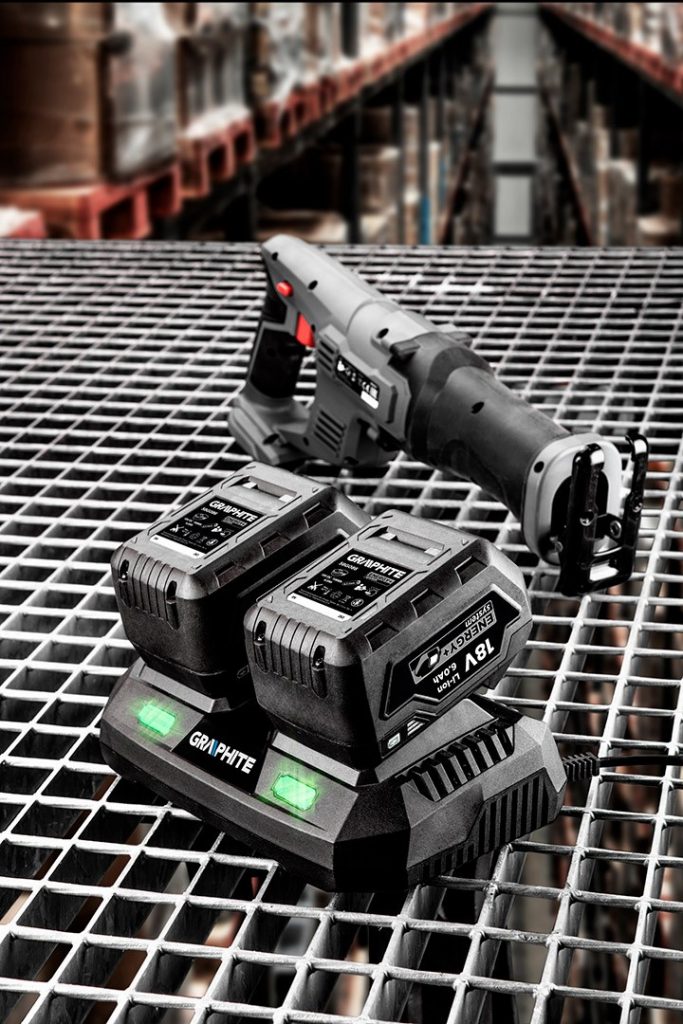
What to bear in mind with battery systems
Although rechargeable batteries seem to have only advantages, it is worth bearing in mind a few aspects that will allow this technology to be used without surprises:
- It is not recommended to leave the batteries in the sun for long periods of time. The battery has internal safety features to protect it from overheating. If the body is too warm, it will not be able to power the device.
- It is worth remembering that many tools with interchangeable components (e.g. grinders), first have to be stripped of their battery and then can be replaced later. This involves safety and eliminates the possibility of accidental starting.

